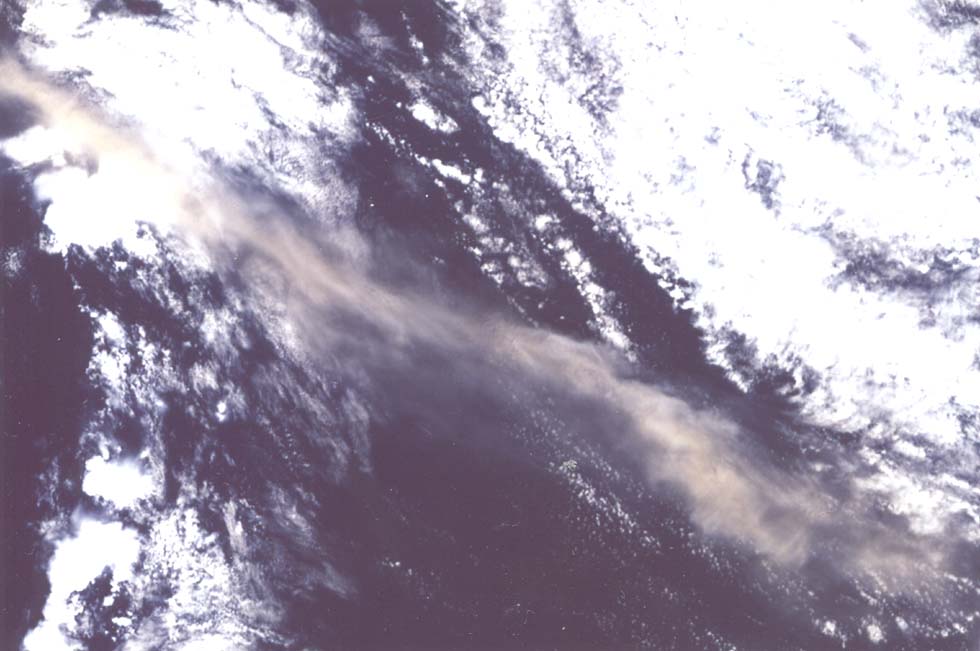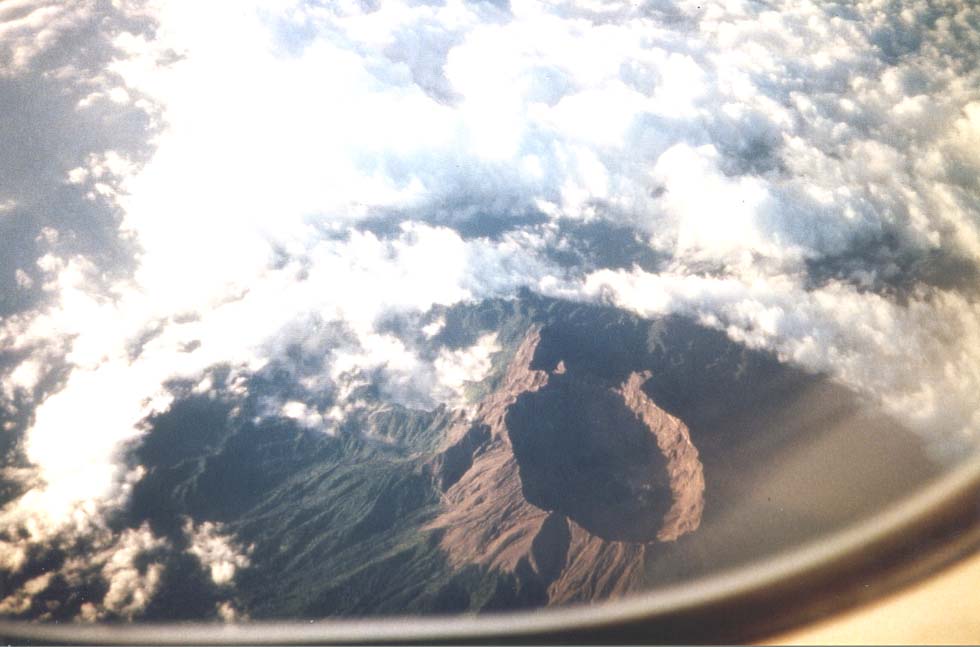|
Natural Catastrophe
Last updated 2018 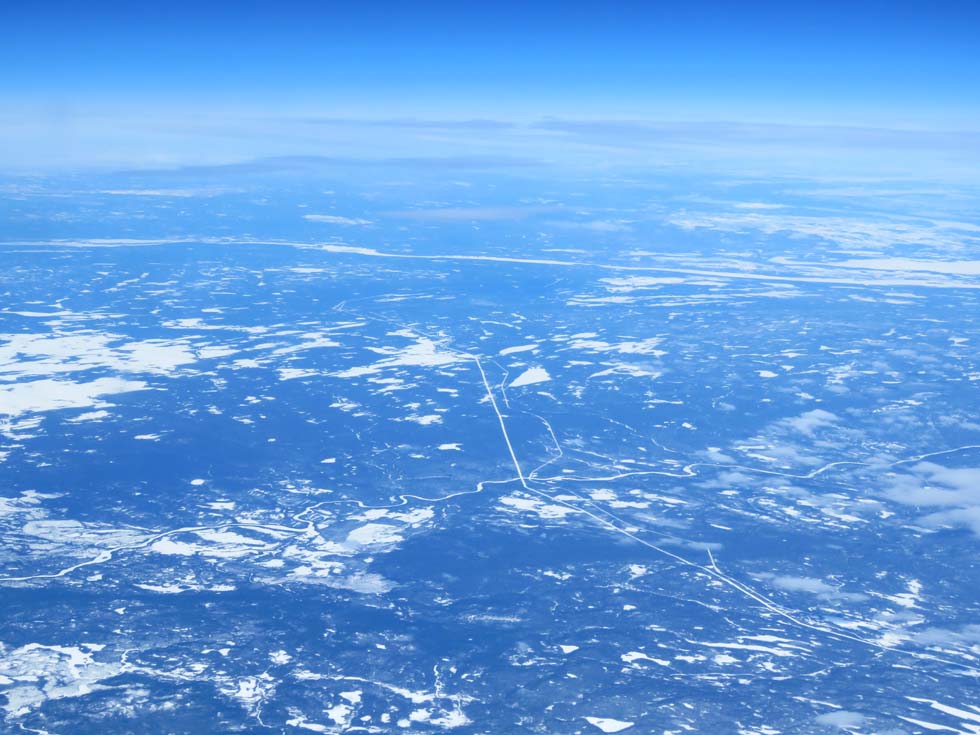 Canada on a Munich - Philadelphia flight in March 2016 (WS) During a flight crossing the Bermuda region, the plane was hit by a turbulence, suddenly the wine was above the glass, the luggage fell down and then the plane made a dive, frightening the passengers… Dear neighbors told us that story of a flight home to Europe. We were more lucky on a flight from Munich to Miami by having chosen not some touristic charter plane, but American Airlines. After crossing the North Atlantic, dark blue with waves, we flew over the East of Canada, white, covered with snow, we landed at Philadelphia, changed to a Boeing 757, taken over from US Airways, and we enjoyed a rainbow view and the sunset over Carolina. Entering darkness, suddenly turbulences arose, “fasten seat belts”, and the Captain announced that we’ll evade the thunderstorm by a detour via the Bahamas. So, without being frightened, we landed quietly at Miami on that March24, 2016 in the Holy Week. 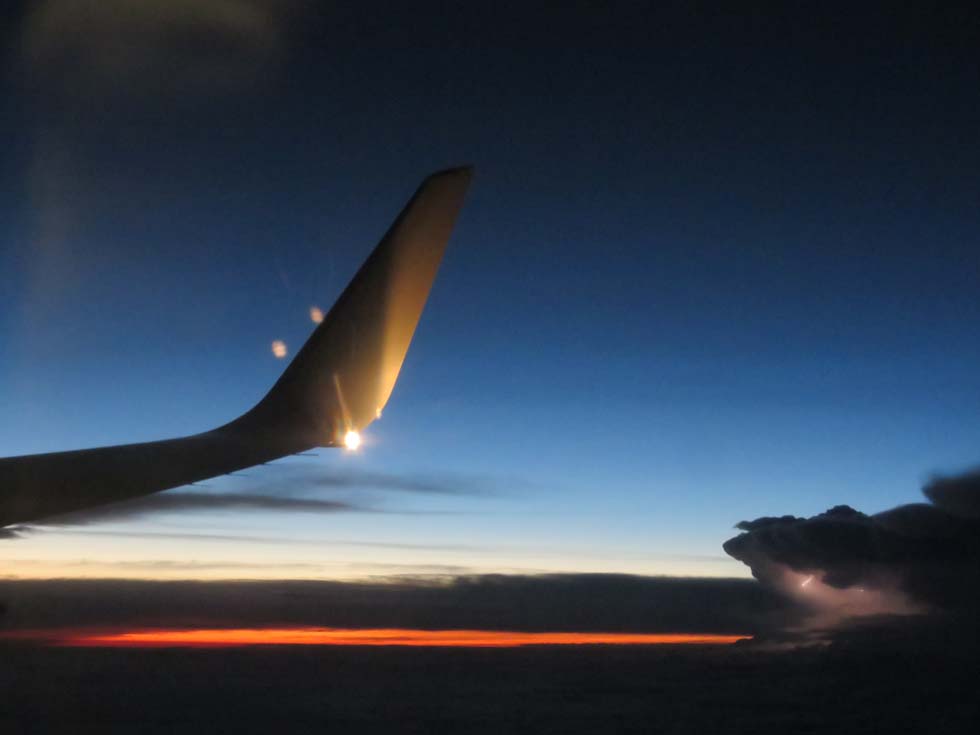 Flight Philadelphia – Miami, circumventing a thunderstorm, March 2016 (WS) Apart from the danger of war and terror, there is always the threat of natural disasters. When in December 2010 after warm decades some 10 or 20 inches snow were falling, the hubs of London, Paris and Frankfurt have been closed for hours, innumerable passengers stranded, at Frankfurt emergency accommodations had to be organized and many long-distance flights were diverted to Munich and other hubs. A traffic breakdown was reported also from Moscow, where they had to know how to live with snow – but snowfall anywhere is not a catastrophe. 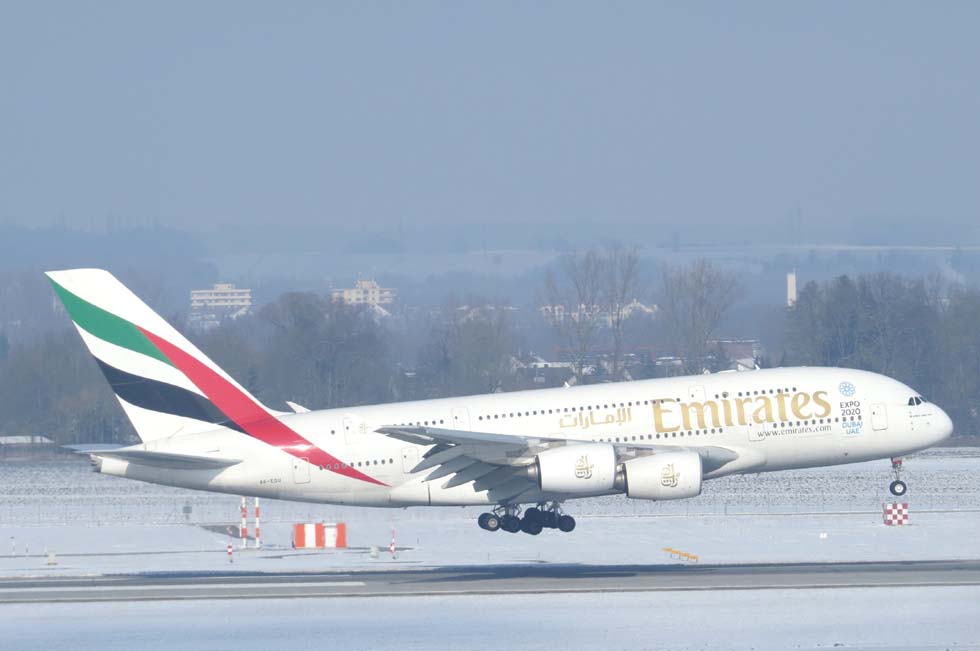 Snow at Munich, Emirates A380, Feb 2013 (WS) Volcanic eruptions are an everlasting danger. The catastrophe of the Krakatau in the Sunda Strait in 1883 had cooled the global climate for months or years. In 1982 volcanic ash stopped all the four engines of a Jumbo jet crossing Indonesia. In 1989 the ash cloud of Mount Redoubt in Alaska had the same effect on a 747 of KLM. In both cases the pilots could restart the engines. The activity of all the 44 volcanoes in Alaska is surveyed by AVO, a government institution, and air traffic is correctly regulated. After the eruption of the Eyjafjallajokull volcano in Iceland on April14, 2010, an ash cloud spread close to the flight path of most North Atlantic flights, being pushed to the south and east of Europe. Airspace closures commenced on April15 over Scotland and were extended over Europe as far as Ukraine. Many flights were canceled, until by April22 the European airspace was once again open, apart from some short-term closures during May notably in Spain and Morocco. Airlines criticized the extent of the closures and Sir Richard Branson of Virgin Atlantic was quoted by Financial Times (May17, 2010) saying: “All the test flights by airlines, aircraft and engine manufacturers have shown no evidence that airlines could not continue to fly completely safely”. Flight Intl (Sep21, 2010) published a strong statement under the headline: “ASHCLOUD INTERRUPTION AVOIDABLE, SAY EXPERTS. Existing knowledge could have saved airlines 1.7 billion euro.” The renowned magazine reported: “Ash fallout leads EU to fast-track Single Sky (II) effort (…). Instead, we had a fragmented patchwork of 27 national airspaces.” The system ‘Avoid’, to be installed for discovering ash particles, was expected. Outbreak of a Yellowstone type volcano would be much more disastrous and it could provoke a climate change.
Earthquakes are a danger for entire regions and a tsunami can devastate coasts. When on Christmas 2004 the Tsunami wave killed more than 200,000 people in Sri Lanka, Thailand and Sumatra, charter planes started empty in order to bring home surviving tourists and then the biggest relief operation, organized by the UN, took place. Also the horrible earthquake at Haiti in 2010 led to rescue flights. In November 2011 the old Bangkok Don Muang airport was flooded, harmless – but for the owners of some old planes possibly being a chance of getting compensation from insurance companies (as LJ assumed it). In Nov 2017 the volcano Agung on Bali interrupted air traffic to and from the capital Denpasar for two days. When in 2011 a disastrous tsunami hit Japan, causing also the Fukushima nuclear powerplant accident, leading airlines have cancelled for some days Tokyo flights, obviously without reason, casting doubt on the reliability of air transport. Famous architect Tadao Ando, vice-chairman on the reconstruction design council, wondered whether his compatriots have lost power. What would he have said about some other nations, which so easily can be driven into panic after every catastrophe, may it be Chernobyl, the Eyjafjallajokull volcano, Fukushima or the next event? For 2005, a year of the hurricanes, the damage by catastrophes was estimated $220 billion, for 2011 no less than $380 billion, according to Munich Re, one of the largest reinsurance enterprises. Its CEO Torsten Reworrek stated that a comparable catastrophe happened in Japan more than thousand years ago and so it is not a permanent risk. In Nov 2013 “Hayan” raged on Samai Island of the Philippines, causing more than 3,600 victims, and thousands of refugees waited at the airport of Tacloban for being saved by special flights. In Dec 2018 the Krakatau caused a tsunami in Indonesia. And natural catastrophes continued to happen anywhere, not listed here. Always there are also other dangers, for example a wide-spread infection, such as the Ebola virus in 2014. The German government had equipped a Lufthansa Airbus A340 for the transport of highly infected persons. When in 2017 plague stroke Madagascar, some foreign airlines avoided the island. And there are always serious dangers, from cosmos – see the main chapter To Space – or from Earth, or man-made…  During a Bangkok – Kuala Lumpur flight, 2003 (WS)
|
